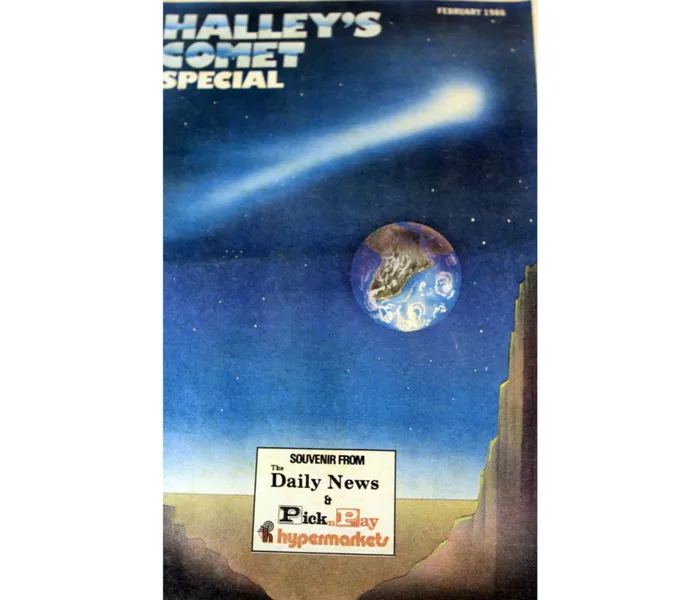Daily News’s 24-carrot soaraway supplement

The Daily News Halley's Comet 1986 supplement advocated eating carrots to help people see the comet clearly. The Daily News Halley's Comet 1986 supplement advocated eating carrots to help people see the comet clearly.
Just 26 years ago, the world was an evolving place littered with nuclear reactors, earthquakes, apartheid policies and 1980s pop culture.
The year 1986 was when the Soviet nuclear reactor exploded in Chernobyl, mad cow disease was first identified, Mike Tyson became the youngest heavyweight champion in history, and the South African government censored the media from reporting local unrest.
But while people were watching “Top Gun” and “Crocodile Dundee”, another phenomenon was fast approaching – Halley’s Comet.
Visible from Earth only every 75 to 76 years, Halley’s made its appearance on February 9, 1986.
It is the only short-period comet visible to the naked eye, and one would be lucky to see it twice in a lifetime – the next one is expected on July 28, 2061.
To mark the rare occasion, the Daily News produced a 24-page supplement on the comet, complete with diagrams, a guide on how and where to look for it, and a children’s colouring competition.
The supplement was donated by an anonymous reader, along with a collection of other editions dating back to the late 1800s. It began by providing safety tips for viewing Halley’s, stating: “If you eat lots of pumpkins, eggs, carrots, apricots and liver, you’ve a better chance of getting a good view of Halley’s Comet.”
Other stories included a business piece on how tour operators around the country had been flooded with phone calls from Durban locals booking trips to the better viewing spots. SAA had to book more comet flights, bookshops struggled to keep up with demand for comet books, and retailers of telescopes and binoculars were at their wits’ end trying to cope.
There was even a story on the speculation that comets played a part in the creation of life – and the spread of viral infections – followed by a list of catastrophic historic events that were blamed on Halley’s, such as the bubonic plague in Europe, the death of King Louis of France in 837AD, an earthquake in Portugal in 1532 and World War I.
“Comets in general have myths surrounding them, and they have generally been associated with bad luck,” said Nicola Loaring, an outreach astronomer at the SA Astronomical Observatory in Cape Town. “Not many people believed those things back in 1986 and I hope they won’t in 2061.”
Excited
Loaring said lots of excitement could be expected again in 2061.
“It’s a big bright comet and people are usually excited about that,” she said. “It was a big deal in 1986 because scientists had a probe going into the comet’s nucleus, but I don’t know if they will be doing that again in 49 years’ time.”
But it was not only in 1986 that people became excited about a comet that could or could not have caused plague and war.
Even back in 1947, scientists had dreams of reaching outer space.
In a weekend edition of the Daily News, dated March 29, 1947, an article entitled “When men reach the moon”stated: “Once just a dream of poets and romance writers, the idea of conquering outer space and making voyages to the moon, Mars and Venus is now being studied by scientists in Britain, France, Russia and America.”
Just 22 years later, a man did walk on the moon – and 11 men followed him within the next few years.
While no person has yet set foot on Mars or Venus, a Mars rover, a vehicle that propels itself across the surface of the planet, has done it for us – four times – while spacecraft have performed various fly-bys, orbits and landings on Venus.
One can only imagine what conquests we would have achieved by the time Halley’s comes around again.